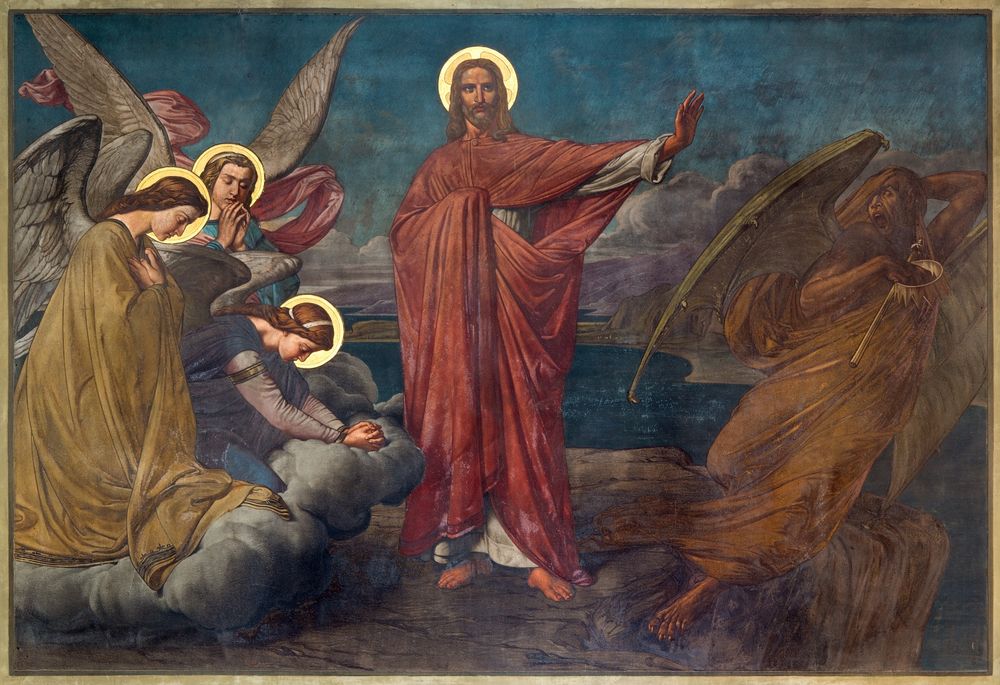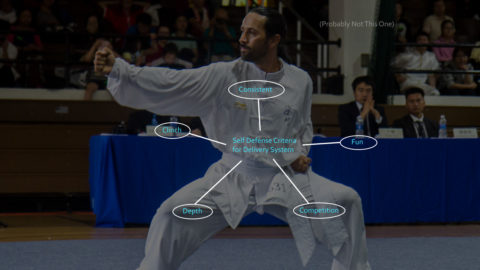Fasting and the Temptations of Christ: Reflections on Lent I
by Borderland Nathan
Matthew 4
1 Then Jesus was led up by the Spirit into the wilderness to be tempted by the devil. 2 And he fasted forty days and forty nights, and afterward he was hungry. 3 And the tempter came and said to him, “If you are the Son of God, command these stones to become loaves of bread.” 4 But he answered, “It is written, ‘Man shall not live by bread alone, but by every word that proceeds from the mouth of God.’” 5 Then the devil took him to the holy city, and set him on the pinnacle of the temple, 6 and said to him, “If you are the Son of God, throw yourself down; for it is written, ‘He will give his angels charge of you,’ and ‘On their hands they will bear you up, lest you strike your foot against a stone.’” 7 Jesus said to him, “Again it is written, ‘You shall not tempt the Lord your God.’” 8 Again, the devil took him to a very high mountain, and showed him all the kingdoms of the world and the glory of them; 9 and he said to him, “All these I will give you, if you will fall down and worship me.” 10 Then Jesus said to him, “Begone, Satan! for it is written, ‘You shall worship the Lord your God and him only shall you serve.’” 11 Then the devil left him, and behold, angels came and ministered to him.
Temptation as Trial
Immediately after his baptism, Jesus is led by the Spirit into the desert to be tempted by Satan. A few questions spring immediately to mind, the first of which being why does God lead us into temptation when this seems to go directly against the very prayer that Jesus taught us? Why do we pray that he “lead us not into temptation” when this passage shows that very thing?
The term temptation in Greek is πειρασμός, transliterated in English as peirasmos. It can mean temptation but also means trial or testing, and reflects the Jewish idea that God allows the faithful to be tested, and the holy men pass the trials.1)Hans Korn, Peirasmos; die Versuchung des Gläubigen in der Griechischen Bibel (Stuttgart, 1937) 78. An example can be found in the Babylonian Talmud, Sanhédrin 107a, where King David asked to be tested by God to be found proven like Abraham, Isaac, and Jacob. Satan appears like a bird and shoots an arrow into a beehive, exposing Bathsheba. Keep that bird imagery in mind for later.2)Kelly, H.A. “The Devil in the Desert.” The Catholic Biblical Quarterly 26, no. 2 (April 1964): 193, n. 8. https://www.jstor.org/stable/43720706.
This question on temptation and the actual meaning of the word is critical because if we misunderstand the nature of the prayer, we will see the relief of suffering as the linchpin of whether or not God is answering our prayers. It is a common problem in protestantism, for instance. My dad lost his faith and lapsed into agnosticism because he was taught that Jesus paid the penalty on the cross, and that he paid the price so that we did not have to. If you are a man that prays to be delivered from trials and suffering but your prayer is not answered, losing faith in God is an understandable next step.
Christianity has never been a safe religion. God leads us directly into battle to be tried and tested. The real question to be asked is not why God does that, but instead who would I rather have lead me into battle if not God? You will suffer. You get to decide whether it happens to you as a victim, or whether you lean into it as a soldier.
The Desert
Why did Jesus go to the desert to be tempted? I have read this passage many times in the past, and never stopped to think about how curious it is. There is an understanding that by going into the desert, Satan will show up to tempt, and yet I never thought to ask why this should be. How anticlimactic, if Jesus went through all that effort to fast for forty days, only to have no one to show up for the tempting.
A helpful motif to understand this passage is the the ritual of the scapegoat and the sin offering in Leviticus 16. On the day of atonement, two goats are prepared. One has the sins of the people laid upon it and is led out, and finally released out into the wilderness to Azazel. The other goat is immolated as a burnt offering to God.

There are a few interesting points. One is that by the time of 2nd Temple Judaism, the figure of Azazel was recognized as being the leader of the fallen angels, known as “Watchers.” This can be seen in widespread Jewish literature such as the Book of Enoch, the Book of Giants, or the Apocalypse of Abraham. By the time of Jesus, Azazel had become a name given to more than just a generic “goat-demon,” but rather a figure that had many of the characteristics of who we now call Satan himself.3)Ibid, see also Lester L Grabbe, “The Scapegoat Tradition: A Study in Early Jewish Interpretation,” Journal for the Study of Judaism 18, no. 2 (December 1987), 157. https://www.jstor.org/stable/24657908. He often, as did Satan, appeared in the form of an unclean bird, among others. Azazel, then, was an interchangeable name with Satan along with others such as Beliar. His angelic army fell from heaven, he ruled over the underworld, he was chained before the end judgment until he would be judged by the messiah, and he was tied to the wilderness.

The wilderness, and the desert in particular, were frequently associated with demons by ancient people. This particular wilderness, between Jerusalem and Jericho, was also where robbers would ambush travelers as in Luke 10:30. There were two territories: the garden where God dwelled, and the wilderness after the fall of Adam where evil dwelled. Jesus went to the smoking ruins; ground zero. Adam had failed and turned the garden into a wilderness, and Israel failed when trying to struggle through the wilderness to return to the garden. This land now belonged to Azazel; Satan. He had rights here, and a holy man wandering through this land could expect to face him, or at the very least get robbed.
Exitus and Reditus
Aquinas structured his Summa Theologiae around a concept called exitus and reditus. Originally this concept was Trinitarian, with God proceeding outward and then ultimately back to himself, and we can even see this at work in creation, as well as tithing and fasting. He gives us blessings, and we give blessings back to him. But this dynamic was shattered by sin, interrupting a natural flow of creation into a vast chasm; a split that had no bridge. Exitus and reditus is exemplified among the ancient Jews with their theology of exile and the return to the promised land. However, the exiled kingdom was never restored in their theology, and the temple was destroyed. There was no reditus. We move away from God into a form of exile through sin, much like the prodigal son spoken of by Jesus, and this is our exitus. But our happiness and life lies in God, and we spend this mortal life struggling to return to him, while also being simultaneously drawn. This return is our reditus.
The drawing part is important, because we cannot return to him on our own. Someone had to bridge the infinite gap to allow this process to take place, and this is the role that Jesus filled. In the old scapegoat ritual, there were two goats. One was given to Azazel, and the other was given to God. But this ritual was performed for people that were still the people of God, in covenant relation with him. Once that union had been broken, there is only exitus; our exile. There is only Azazel. The early fathers saw Jesus as both scapegoat and immolation.4)See Justin Martyr, Dialogue with Trypho, 40, 111, and Tertullian, Against Marcion, 3.7.7, Against the Jews, 14.9. Rather than having a goat moving into the desert away from a holy people, Jesus had to first fulfill the scapegoat role by descending to where we were, in our exitus. He then had to conquer the one that had rights over us, suffer death, and return his sacrifice to God, thus instituting our means of reditus.
But the Devil is in the way, and we still have to go through him. We often think of God leading us into temptation as a form of cosmic torture. He wants to see us suffer and fail; he wants to see how much we can take as we ask and seek and knock, before he slams the door in our face. But this is not the case. We are in exile, and there are evil things in the desert that prey on us as we return home. God walks alongside us in Christ as he battles with us through our foes, from exitus to reditus. But hey. We can always hope the way is clear. We can always hope and pray that we are perfect and life is a picnic. And yet that is not reality. The reality is that just like Jesus in the garden of Gethsemane, we ask for the cup of suffering to pass over us, but understand that it rarely does.
The Threefold Temptations
The fathers speak of how in the garden of Eden, Adam was tempted with a three-fold lust, and that all sins could be fit within these broad categories.5)Cyprian, Treatise II, and Jerome, Letter 108 to Eustochium. First there is the lust of the eyes, and these are external goods. Then there is the lust of the flesh, and these are bodily desires for sex and food. Finally there is the pride of life. Pride is the fundamental sin that serves as the basis for the other deadly sins, since pride is what elevates a man’s own perception of reality, and therefore himself, above the established hierarchy of God.6)Augustine, Homilies on the First Epistle of John, Homily 2. All sin is the disordered act of inverting the hierarchy of ends and intentions, whether by seeing a lesser good as greater than it actually is, or not seeing the due good in a higher good. This inability to follow the ladder of lesser goods to higher goods in proper order ultimately blinds us from seeing the greatest good, which is God.7)Thomas Aquinas, Summa Theologiae, I-II, Q. 71, Art. 6, ad 3; Q. 72, Art. 1, ad 2. Choosing to invert the hierarchy of lesser and greater ends established by God makes man the arbiter of reality. This is pride. All sin then, is ultimately derivative of pride, and is a form of idolatry, both of himself and of the things that the man chooses to make more important than they actually are.
Likewise to Adam, Israel was tested in the desert, and ultimately failed. The law was given to the new generation in Deuteronomy, with only two surviving members from the original group of Israelites that had set out from Egypt. Where Adam and Israel had failed, Jesus would succeed. In the three temptations by Satan in the desert, Jesus is tempted according to the same three-fold lust with which Adam was tempted in the garden.
He was tempted while hungry to turn stone into loaves of bread, and this was the lust of the flesh. He was tempted to have his own life saved in a public spectacular fashion, and this was the pride of life. He was tempted with all the kingdoms of the world, and this was the lust of the eyes. Each temptation failed, and Satan departed. How did he succeed where Adam failed?
Fasting as a Weapon
The early church fathers noted that the first command given to Adam was an act of fasting, by outlining what he must not eat. “…but of the tree of the knowledge of good and evil you shall not eat…”

Saint Basil, 329 AD-379 A.D.
“Have respect for the antiquity of fasting. It is as old as humanity itself; it was prescribed in Paradise. It was the first commandment that Adam received: ‘Of the tree of the knowledge of good and evil ye shall not eat.’ Through the words ‘ye shall not eat’ the law of fasting and abstinence is laid down. If Eve had fasted from the tree, we would not now be in need of this fast.”8)Basil, On Fasting, Homily 1.
He sought something that would have been given to him anyway, but he sought to attain it apart from the means God had given him. Saint Thomas Aquinas has pointed out that for this reason, fasting was a part of natural law, since it was right to fast in order to achieve a virtuous end. As Adam brought death and concupiscence into the world through his sin, now we struggle to order ourselves toward God by doing the very thing that he failed to do.
Jesus changed the game with his fast. Prior to this, fasting in the Old Testament had many purposes but most of them had to do with penance and atonement. Jesus fasted directly before engaging in spiritual warfare. This is worth examining. In the apocryphal literature of The Life of Adam and Eve, Adam performed a 40 day fast after his sin in the garden as penance. But even this was after his temptation because of his failure to do it before. The act of fasting itself can be seen as a form of tithing of the days of the year, by withholding from some of the resources in your life as an acknowledgment that they are gifts from God. In the calendar, 42 days of fasting, minus six Sundays where we do not fast, is 36, which is a rough ten percent of the 365 day calendar year, the same as our ten percent tithe.9)Gregory the Great, Forty Gospel Homilies, Homily 14.
After the garden was turned into a wilderness, we see how Israel wandered for 40 years in the desert before they were allowed to enter the promised land. In Exodus 16:2-3 they grumbled against God and Moses because they were hungry, and yearned for the fleshpots of Egypt. This lack of trust in the care of God was another grave corporate sin that needed to be addressed by the fast of Christ.
There are cases of fasting prior to physical warfare in the old testament, but this was was shown unfavorably. In 1 Samuel 14:24-33, King Saul forced a fast on his men, and they were so weak that after the battle they killed animals and sinned by eating the flesh with the blood, which was against the law. In 1 Maccabees 3:17 the men ask Judas whether to enter into a battle because they had not eaten all day. They go on to rely on God, who gives them the victory, but they did not rashly choose to fight after being hungry as King Saul did; they debated the issue. We note two things. The first is that fasting can weaken the body, and the second is that this forces reliance on God.
Because of this, fasting takes on a unique strength as a weapon in spiritual warfare. In Old Testament theology, spiritual benefits were a secondary result from being closer to God. Relying on God in warfare could potentially mean that God delivered a victory. Relying on God in times of famine could result in God providing food. And yet Jesus appears to have taken a largely penitential act and instituted it as a primary means of spiritual combat.
In spiritual combat, fasting has only positive outcomes. The reliance on God makes the weapon sharper, and the lack of reliance on created things like food makes it harder for the Devil to tempt you.
After instituting fasting as a weapon, his disciples were able to cast out the strongest demons with prayer and fasting, and the fathers note that the very act of fasting by members of the Church strikes Satan with actual blows.10)Leo the Great, Sermon 39, On Lent, I. This is because through Christ, we are a part of his mystical body in the Church. What weakens a member weakens the entire body, and what strengthens one member strengthens the entire body. Our participation in Christ’s life, suffering, and death allows us to step on the head of the serpent along with him, and so fasting itself takes on a unique role in the Christian life as a weapon of spiritual warfare.

Saint Leo the Great, 400 A.D. -461 A.D.
“So, dearly-beloved, let us who instructed in Divine learning come wittingly to the present contest and strife, hear the Apostle when he says, ‘for our struggle is not against flesh and blood, but against principalities and powers, against the rulers of this dark world, against spiritual wickedness in heavenly things,’ and let us not forget that these our enemies feel it is against them all is done that we strive to do for our salvation, and that by the very fact of our seeking after some good thing we are challenging our foes. For this is an old-standing quarrel between us and them fostered by the devil’s ill-will, so that they are tortured by our being justified, because they have fallen from those good things to which we, God helping us, are advancing. If, therefore, we are raised, they are prostrated: if we are strengthened, they are weakened. Our cures are their blows, because they are wounded by our wounds’ cure.”11)Ibid.
References










 Rob Brotzman
Rob Brotzman  Nathan Wagar
Nathan Wagar